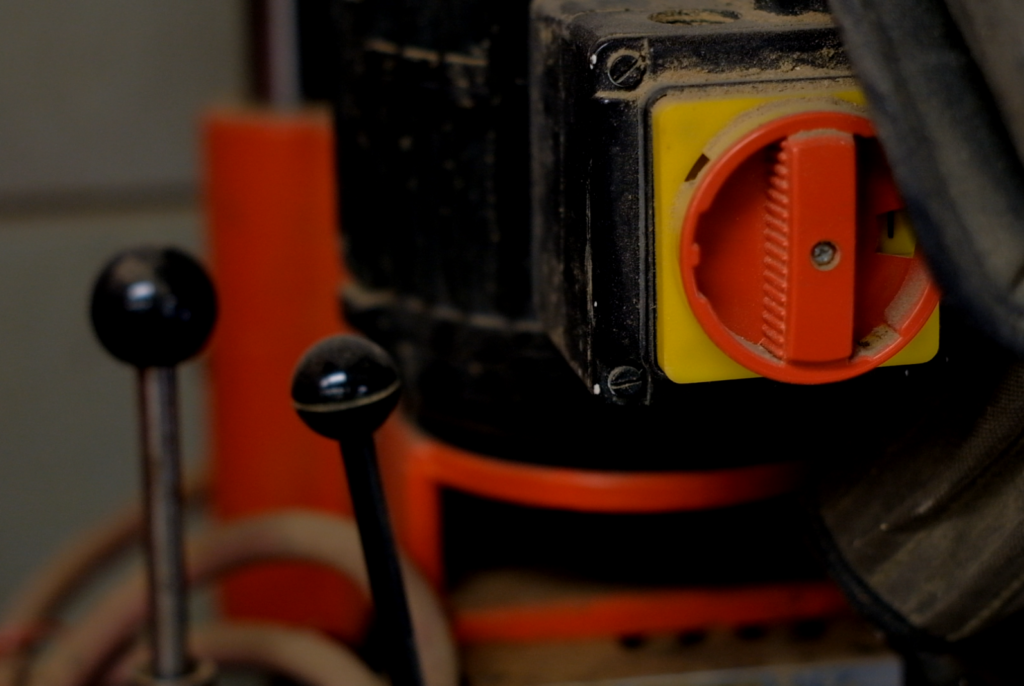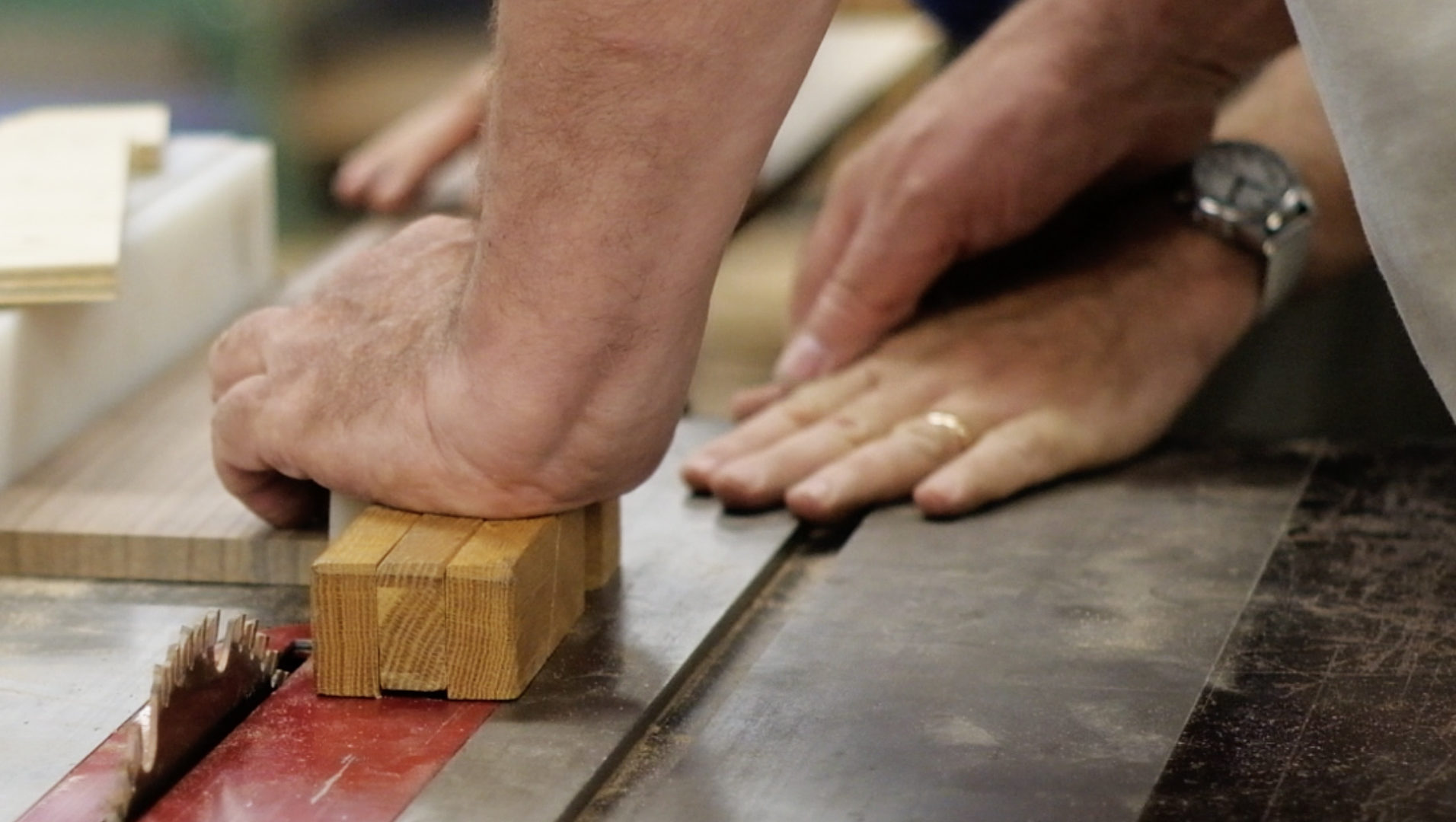Most people are familiar with confirmation in UX design. An example is a pop-up window that asks, “are you sure you want to delete this file”? In woodworking, confirmations have a safety role, generally asking “are you sure you want to put your body part there”? or “are you sure it is ok turn on the machine now”? Woodworkers use visual and audio confirmation, such as the blur and whir of a spinning saw blade. Woodworkers also use tactile confirmations, such as safety switches that require two movements.
Blind woodworkers identify additional tactile confirmations that might not be obvious to sighted woodworkers. These include lines incidental to a tool’s manufacture, such as the joining of two surfaces in a platen, or the knurling on one button, but not another, or positionable confirmations like a magnetic feather board. These confirmations might indicate a safe or unsafe area, the function of something, or when to change grip. Tactile confirmations should be explored, identified, and explained by an instructor before tool use, for safety purposes. Encourage students to identify their own confirmations.

Tactile confirmations should be explored, identified, and explained by an instructor before tool use, for safety purposes. Especially when it comes to safety, and knowing what a safe area feels like, and what a dangerous area feels like. In this video below you can see a blind woodworker teaching. a student some of the confirmations he uses to safely operate a table saw.
When students we taught how to use the planer, it was explained that when their hands feel the line between the platen and the extension, it is unsafe and unnecessary to continue feeding the wood. From that point, the workpiece was “confirmed” safe to go through on its own, and it was “confirmed” unsafe and unnecessary to move hand closer.
